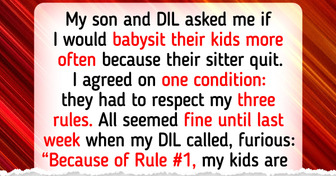12 Double-Life Stories That Prove You Don’t Really Know Someone

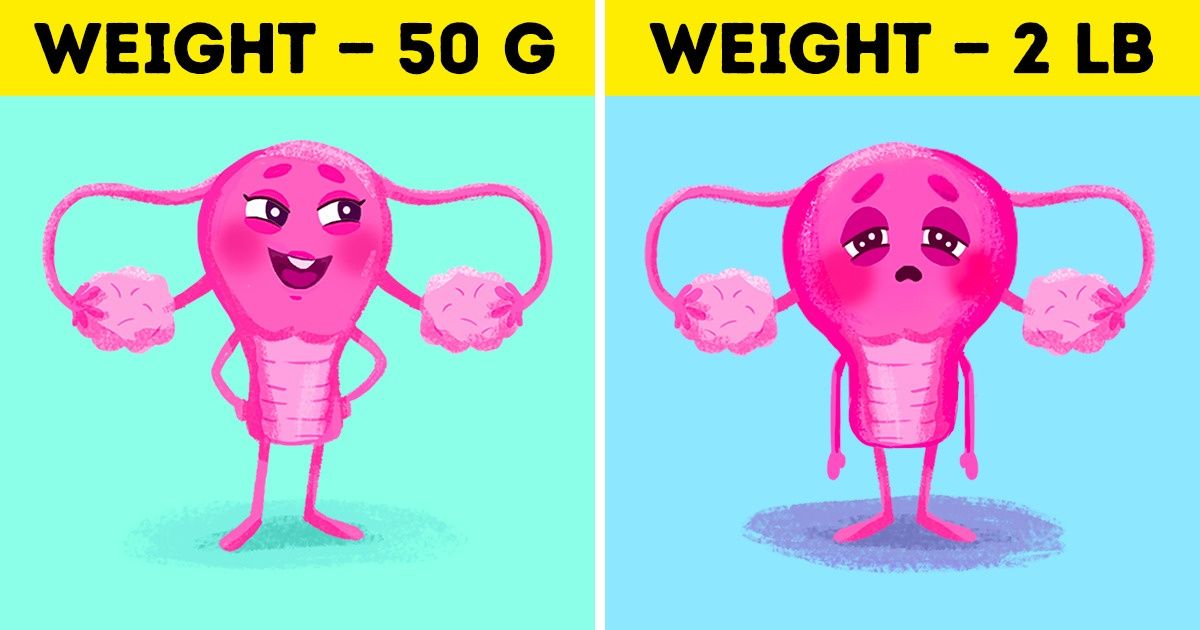
Despite being one of the most touching moments in life, giving birth to a child puts a lot of strain on the female body. Though it only takes 2-3 days or even 24 hours for some young mothers to leave the hospital if they don’t have any complications, the rehabilitation process actually lasts much longer.
Bright Side decided to figure out what changes a female body goes through during delivery and how much time it really needs to restore itself.
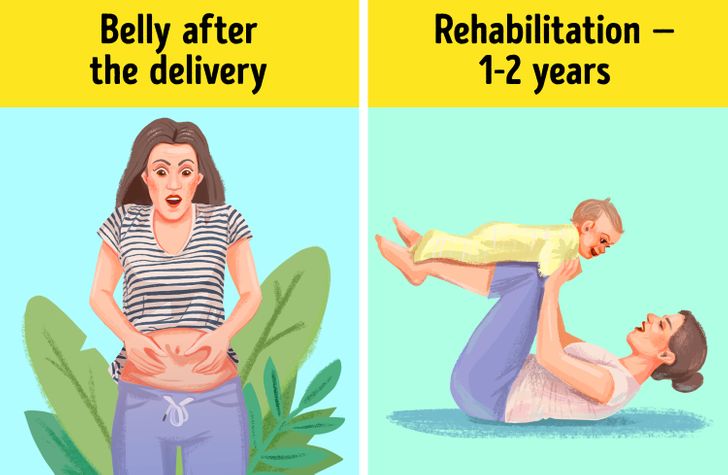
The subcutaneous fat in the abdomen that protects the baby from external factors can significantly increase during pregnancy. Hormonal changes and irrational nutrition facilitate the process. That’s why the condition of a woman’s belly during the postpartum period depends on how many extra pounds she gained during her pregnancy.
The abdominal muscles after childbirth reduce only after 6-8 weeks, while it takes more time for them to restore after a Caesarean section. If there are no issues with the diastasis recti (also known as abdominal separation) that require medical help, then the mother can start doing physical exercises 1.5-2 months after delivery. If a woman doesn’t overexert herself with exercise, it will take 1-2 years for her abdominal muscles to restore.
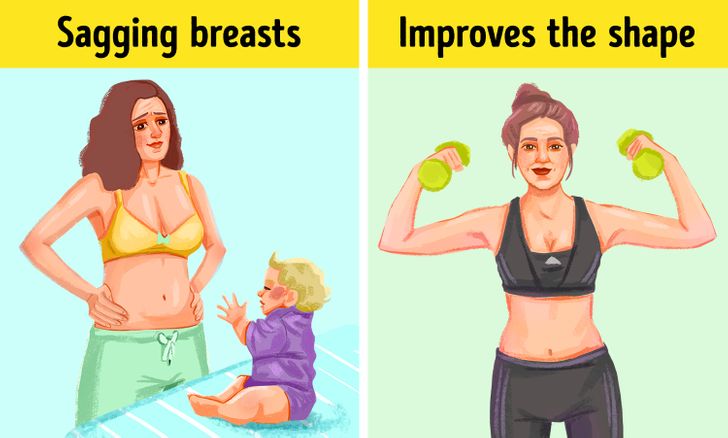
During lactation, female breasts become bigger due to the enlargements of the segments that are stretched by milk. Ligaments and muscles can’t support the breast tissue the same way they supported it before the pregnancy since their weight in the postpartum period increases by 2-3 times. This can lead to ptosis, or sagging breasts. Moreover, the nipples and areolas become enlarged and darker since the color can become transparent and blue and blood vessels can become visible as the skin becomes thinner. The more milk a woman has, the heavier her breasts become and in order to cope with the increased load, breasts require proper support and care.
The younger the mother is, the more elastic her tissues are. Moreover, the more trained her breasts muscles were before the pregnancy, the less time it will take for them to become restored after the lactation period. Unfortunately, it’s not always possible to get back to the initial “maiden” shapes but if a woman exercises her muscles, she can get good results.
Correct nutrition, consuming vitamins of the A, B, and C group, a light manual massage of the breasts, comfortable supportive underwear and, of course, the exercises mentioned here, can help preserve the beauty of the breasts and the elasticity of the skin.
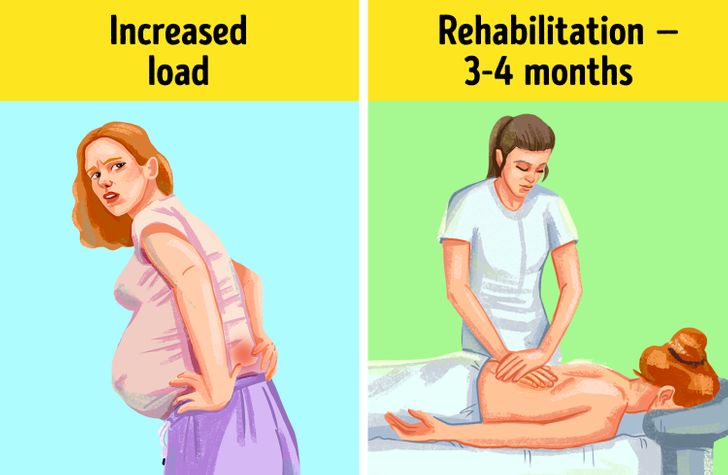
During the pregnancy, a woman’s musculoskeletal system experiences an increased load and the body produces the hormone relaxin, which is responsible for the elasticity of the vertebral ligaments and muscles. This load leads to changes in the spine, the joints of the lower limbs, the pelvic bones, and the back muscles. During this period, the center of gravity changes, causing the spine to shift which can result in pain and discomfort. After the delivery, a drastic decrease of progesterone and estrogen levels occurs, which slows down the body’s metabolism and leads to an increase of fatty tissue.
The recovery period of the musculoskeletal system after childbirth happens gradually and takes 3-4 months. Within this time, a woman can experience pain in her joints, her bones, and can suffer from muscle cramps. Wearing an after-delivery supporting bandage, as well as doing special exercises aimed at strengthening the back muscles can help cope with the pain in the lumbar area. The changes mentioned above can disappear completely only if a woman didn’t have any issues with her musculoskeletal system initially. But, unfortunately, many women today suffer from abnormalities such as scoliosis and flat feet from a young age.
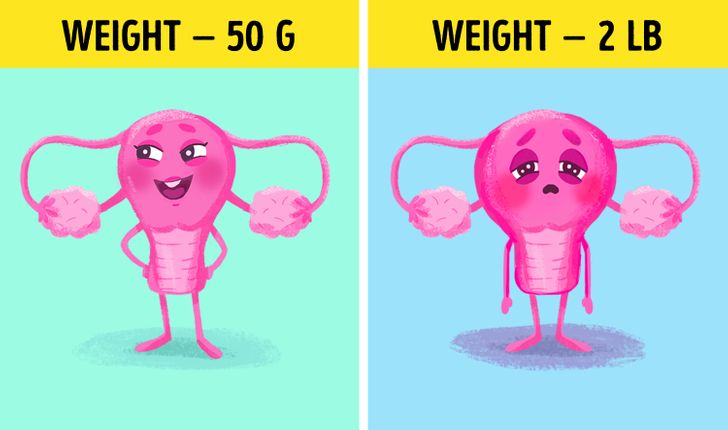
The uterus goes through many changes during a woman’s pregnancy and during the delivery process. The weight of the uterus of a woman who has never given birth is normally 40 g to 60 g, while a woman who has given birth has a uterus that weighs approximately 80 g. At the same time, the weight of the uterus right after delivery is 2 lb. These changes are a result of muscle hypertrophy that appears during pregnancy. The bottom of the uterus is located at the level of the navel — that’s why a new mother looks as if she is still pregnant within the first few days after giving birth.
After the placenta becomes detached, the uterus looks like a surface wound and it heals itself by the 9th or 10th day. During the first 3-7 days, there is usually heavy uterine bleeding that gradually decreases. After that, within the next 6-8 weeks after the delivery, there are bloody issues called lochia. If the uterus is contracting normally, then its weight will reduce by 2 times after 10 days. About 1.5-2 months after the delivery, the uterus will eventually restore itself and will get back to its usual weight, which is 50 g to 80 g.
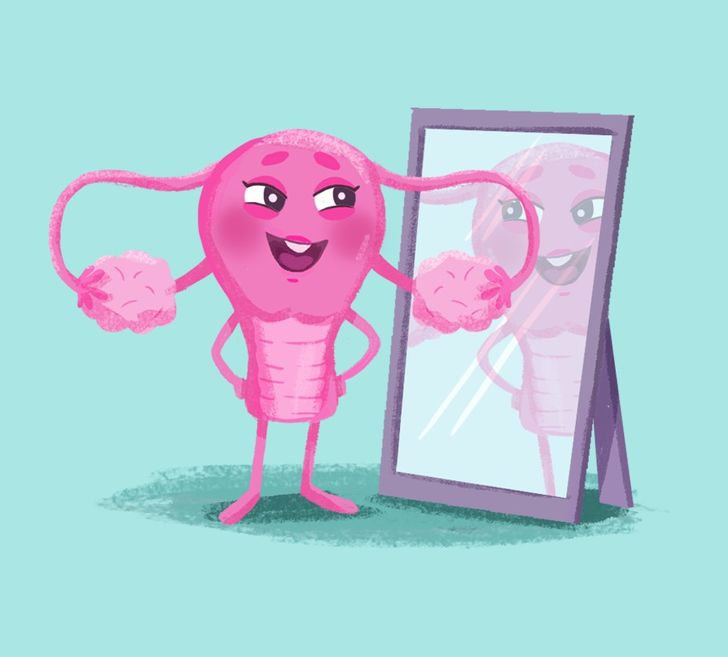
The cervix also goes through many changes. Right after the delivery, it stays open about 4-5 in and by the 10th day after the delivery, the cervix closes up completely. By the 21st day, its outer pharynx closes too. After delivery, the cervix changes its shape forever — it becomes cylindrical instead of conical and the outer pharynx becomes slit-like.
This gynecological characteristic is natural for all women who have given birth to a child and can only be seen by a gynecologist. Of course, such changes are not there if a woman had a Caesarean section. 3 months after the delivery, the cervix starts to function as usual.
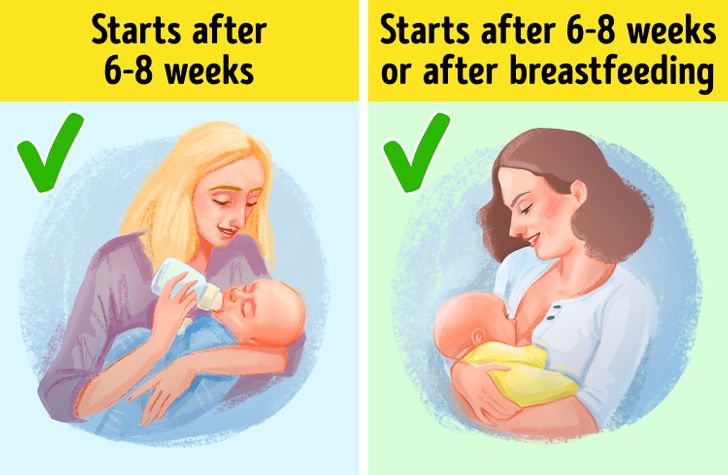
The rehabilitation process of the menstrual function of a woman who gave birth to a child is affected by many factors — how the pregnancy went, the presence of any complications during the delivery, the woman’s age, nutrition, the presence of chronical diseases, the woman’s sleeping and rest regime, and many other aspects of the mother’s life.
As a rule, women who don’t breastfeed (and sometimes even those who do breastfeed) experience their first menstruation (not lochia) 6-8 weeks after having a baby, if there are no significant abnormalities. Very often, the menstruation cycle of a woman who breastfeeds can become normal only after she finishes breastfeeding. This is due to the process of lactation and is not considered a pathology since the timing of the recovery of the menstrual cycle varies for each woman.
During the breastfeeding process, the prolactin hormone that stimulates the production of a young mother’s milk is generated. It’s the same hormone that suppresses the production of hormones in the ovaries, as well as the ovum maturation and ovulation. Just like the menstrual cycle, ovulation restores after the end of the breastfeeding process but it doesn’t give any guarantees that a woman can’t get pregnant during this period.
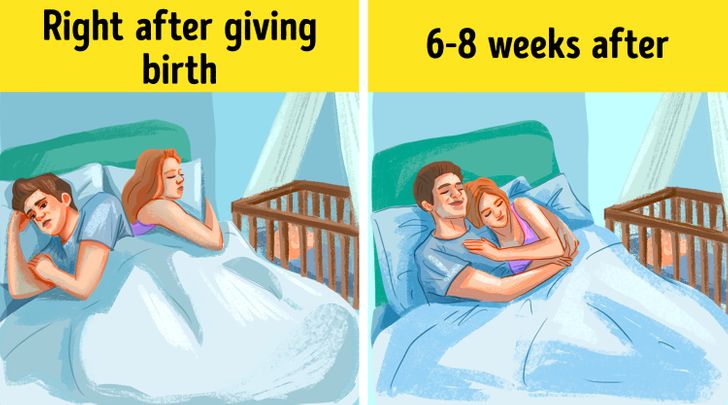
The vagina is a muscular organ that also undergoes a number of changes during childbirth. Its muscles stretch out and lose their elasticity, but it’s quite a normal process in this situation. Nevertheless, many women worry that the size of their vagina will be bigger after giving birth and that it will have a negative effect on the quality of their intimate life. The truth is that there is no reason to worry because the vagina loses it shape only temporarily.
3-4 days after the delivery, edemas disappear and a couple of weeks later, all of the abrasions and cracks heal (if there were no severe traumas and wounds) so the walls of the vagina become a pale pink color again. It’s only the structure of that walls that change forever — the vaginas of women who have given birth have smooth walls in comparison to those of women who have not had children. That’s actually the reason behind the illusion that the size of the vagina increases after childbirth.
The period of vagina restoration after giving birth varies from 6 to 8 weeks. This process depends on any possible complications and individual features of the body. It is, however, necessary to stay away from becoming intimate in order to prevent getting an infection on the wounded surface of the uterus. Special Kegel exercises will help get the muscles of the vagina in shape quicker — just squeeze and relax the pelvic floor muscles 15-20 times 5 times a day.
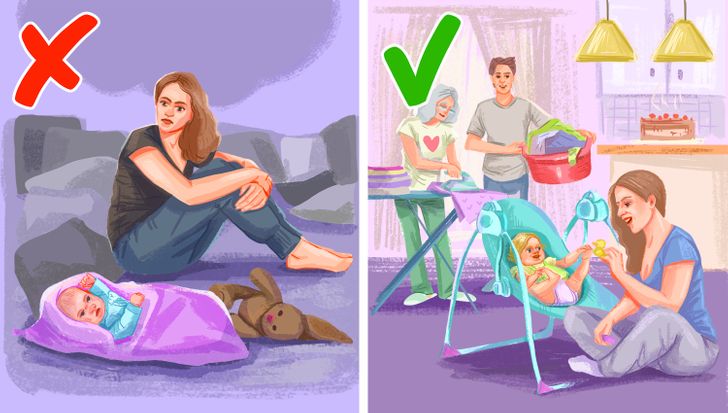
During the postpartum period, young mothers often suffer from attacks of unreasonable anxiety, fatigue, and drastic mood swings. A woman experiences a huge psychological load, constantly worries about the health and the proper development of her child, doesn’t get enough sleep, and the constant fatigue can lead to the fact that her psychomotor reactions can decrease.
Some women suffer from postpartum depression. The reasons for this depressive condition can be the young mother’s feeling of guilt due to the lack of time, as well as a subconscious conviction in the fact that the baby is the reason for the woman’s temporary insolvency. This situation requires the help of experts or at least a consultation with a psychotherapist who will help the mother overcome her issues and start enjoying her motherhood.
Generally speaking, a woman who has just become a mother needs the help, support, and understanding of her close friends and family, regular walks in the fresh air, and a full and balanced nutrition plan.
Laura Fry is an American woman who shared an example of how complicated the process of a woman’s rehabilitation is after childbirth on her Facebook page. She showed that a paper plate with the diameter of 8.6 in equals an average diameter of the placenta that leaves a wound in the uterus after childbirth.
Do you have a child? What issues have you encountered during the postpartum period and how did you manage to overcome them? Share your thoughts with us in the comments section below!




